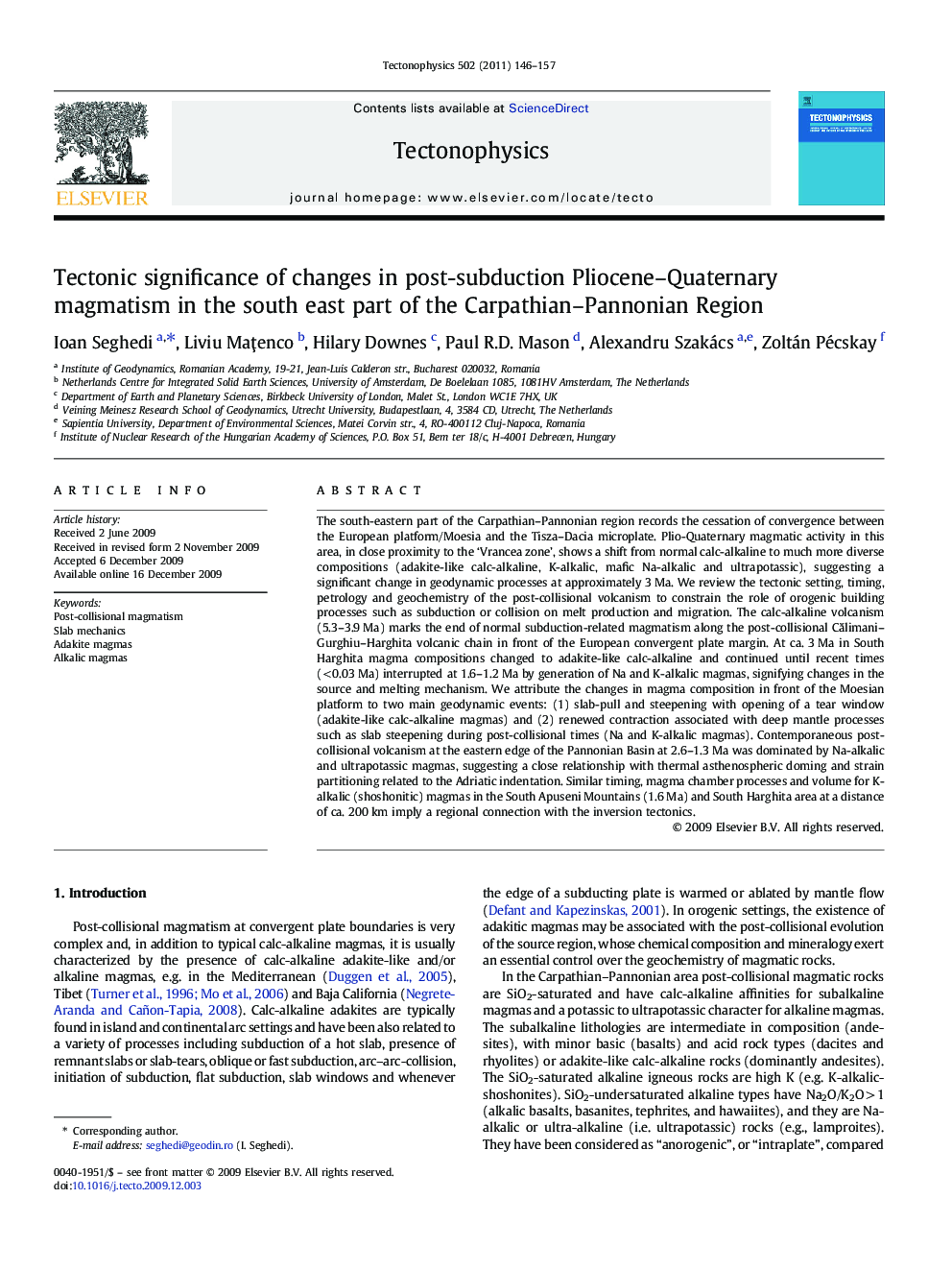| کد مقاله | کد نشریه | سال انتشار | مقاله انگلیسی | نسخه تمام متن |
|---|---|---|---|---|
| 4693234 | 1636849 | 2011 | 12 صفحه PDF | دانلود رایگان |

The south-eastern part of the Carpathian–Pannonian region records the cessation of convergence between the European platform/Moesia and the Tisza–Dacia microplate. Plio-Quaternary magmatic activity in this area, in close proximity to the ‘Vrancea zone’, shows a shift from normal calc-alkaline to much more diverse compositions (adakite-like calc-alkaline, K-alkalic, mafic Na-alkalic and ultrapotassic), suggesting a significant change in geodynamic processes at approximately 3 Ma. We review the tectonic setting, timing, petrology and geochemistry of the post-collisional volcanism to constrain the role of orogenic building processes such as subduction or collision on melt production and migration. The calc-alkaline volcanism (5.3–3.9 Ma) marks the end of normal subduction-related magmatism along the post-collisional Călimani–Gurghiu–Harghita volcanic chain in front of the European convergent plate margin. At ca. 3 Ma in South Harghita magma compositions changed to adakite-like calc-alkaline and continued until recent times (< 0.03 Ma) interrupted at 1.6–1.2 Ma by generation of Na and K-alkalic magmas, signifying changes in the source and melting mechanism. We attribute the changes in magma composition in front of the Moesian platform to two main geodynamic events: (1) slab-pull and steepening with opening of a tear window (adakite-like calc-alkaline magmas) and (2) renewed contraction associated with deep mantle processes such as slab steepening during post-collisional times (Na and K-alkalic magmas). Contemporaneous post-collisional volcanism at the eastern edge of the Pannonian Basin at 2.6–1.3 Ma was dominated by Na-alkalic and ultrapotassic magmas, suggesting a close relationship with thermal asthenospheric doming and strain partitioning related to the Adriatic indentation. Similar timing, magma chamber processes and volume for K-alkalic (shoshonitic) magmas in the South Apuseni Mountains (1.6 Ma) and South Harghita area at a distance of ca. 200 km imply a regional connection with the inversion tectonics.
Journal: Tectonophysics - Volume 502, Issues 1–2, 13 April 2011, Pages 146–157